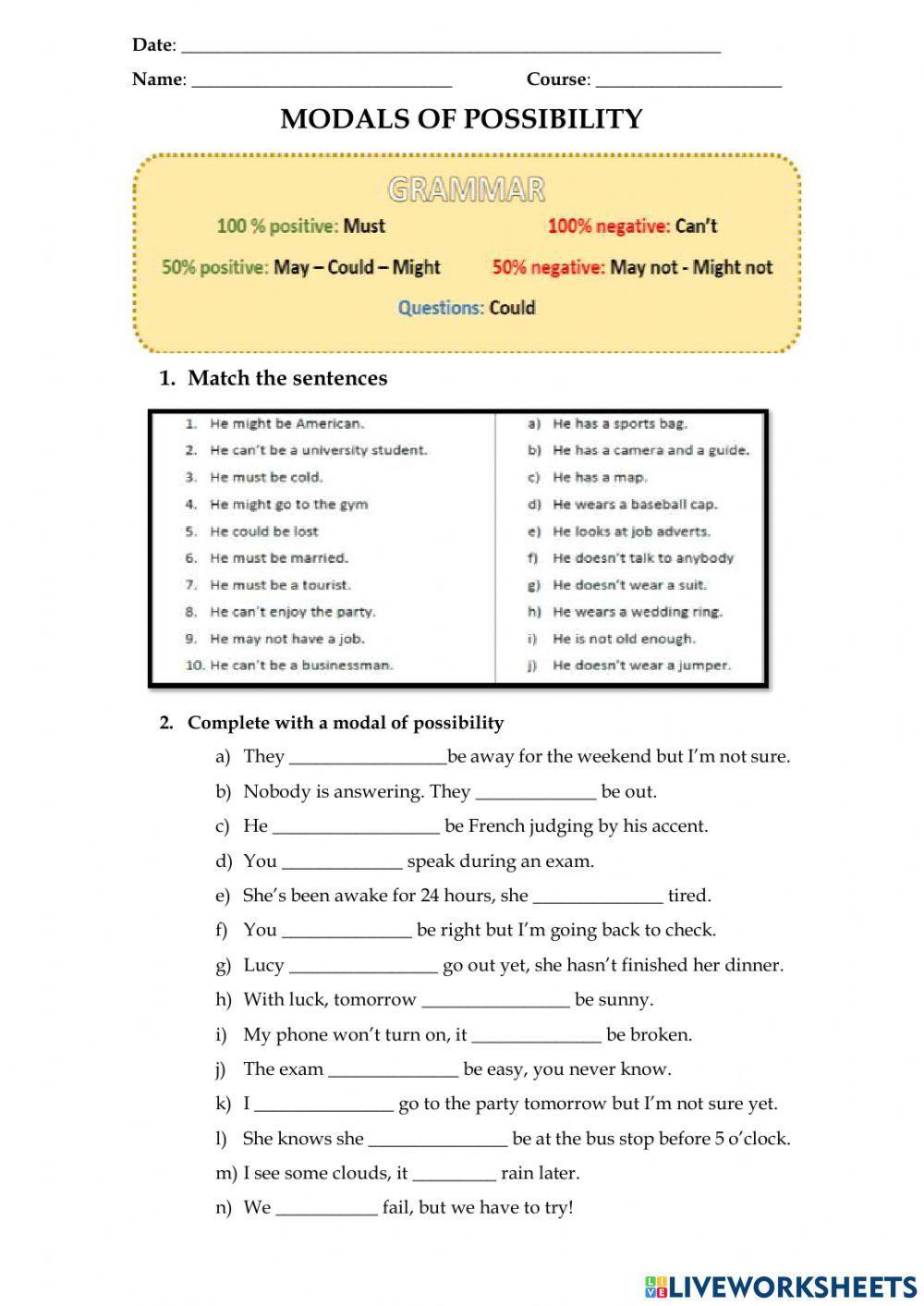-
English as a Second Language (ESL)
-
Modal verbs
-
Edad 15+
-
level: Pre-intermediate
-
English
Author's Instructions
Modals of possibility
-
English as a Second Language (ESL)
-
Modal verbs
-
Edad 15+
-
level: Pre-intermediate
-
English
Author's Instructions
Modals of possibility












